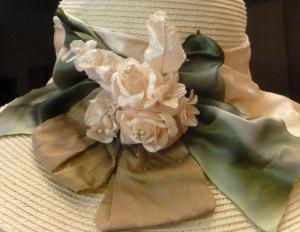
We celebrated Easter this year with our community of Christian and Jewish interfaith families. Our minister started off by pointing out that Easter is not in the Bible, and that our holiday traditions make reference to ancient goddesses, and the fertility rites of spring. She then gathered the children together and talked to them about the Buddhist metaphor of a cup of tea representing the comforting memories of life after the tea bag (or body) is gone. She’s not your typical minister.
Next, our rabbi gave an adult sermon about the themes of intimacy, transcendence and unity in the story of the resurrection of Jesus. Somehow, the idea of life beyond death, of renewal and regeneration, seemed completely universal to me as he spoke. As a Jew, I do not feel I need to believe in a messiah or a personal savior in order to celebrate these Easter messages. Our rabbi spent his career at Georgetown, knows his gospels, and has been called a “closet Catholic” by Catholic friends. And yet, he’s an erudite, dedicated and deeply spiritual Jew. He’s not your typical rabbi.
In addition to the Lord of the Dance and older traditional Easter hymns, we sang Bob Marley’s One Love. Then, we had a pancake breakfast that included matzoh brie (matzoh fried in eggs) for those of us who aren’t eating leavening until the end of Passover. This type of radical culinary inclusion is the norm in an interfaith families community. And it is part of what makes this community so comfortable, and so precious, for me.
After our Easter morning with Christians and Jews, I made a quick change out of my pastel dress and Easter bonnet and into a bold print Senegalese outfit, in order to join a community of Catholics and Muslims for our second Easter event of the day, a gathering of the local Catholic Senegalese association. We had the great fortune to be invited to this event by two Senegalese-American friends, one Catholic and one Muslim, who are cousins from an interfaith family, and who know that my husband and I crave Senegalese food and company ever since our years in Dakar. Intermarriage between Muslims and Catholics is not uncommon in Senegal. In fact, both of the Muslim Presidents of Senegal I interviewed as a journalist (Abdou Diouf and Abdoulaye Wade) had Catholic wives.
What struck me at this Easter feast, and touched me deeply, was the way the Catholics made sure to accommodate the dietary restrictions of Muslim family members and friends. All of the main dishes featured mutton or chicken, rather than ham, and the one dish with pork in it was carefully labelled. Our Muslim friend reminded us how people of all religions in Senegal share another local culinary tradition on Good Friday: ngalax, a dessert made from peanut butter, vanilla, sugar, and the fruit of the baobab tree, served with raisins over millet couscous. Typically, Catholics make the dish on Good Friday and deliver it to neighbors, friends and family of all religions, just as Muslims in Senegal share the mutton from the Tabaski (or Eid al-Adha) feast with neighbors of all religions.
I often use the Passover dish of charoset as a metaphor for my interfaith family: a mix of nuts, fruits, spices and wine, with flavors melding over time. Now I have a sweet new metaphor: the nuts and fruits and grain of ngalax, bonding interfaith families, neighborhoods, and countries.

